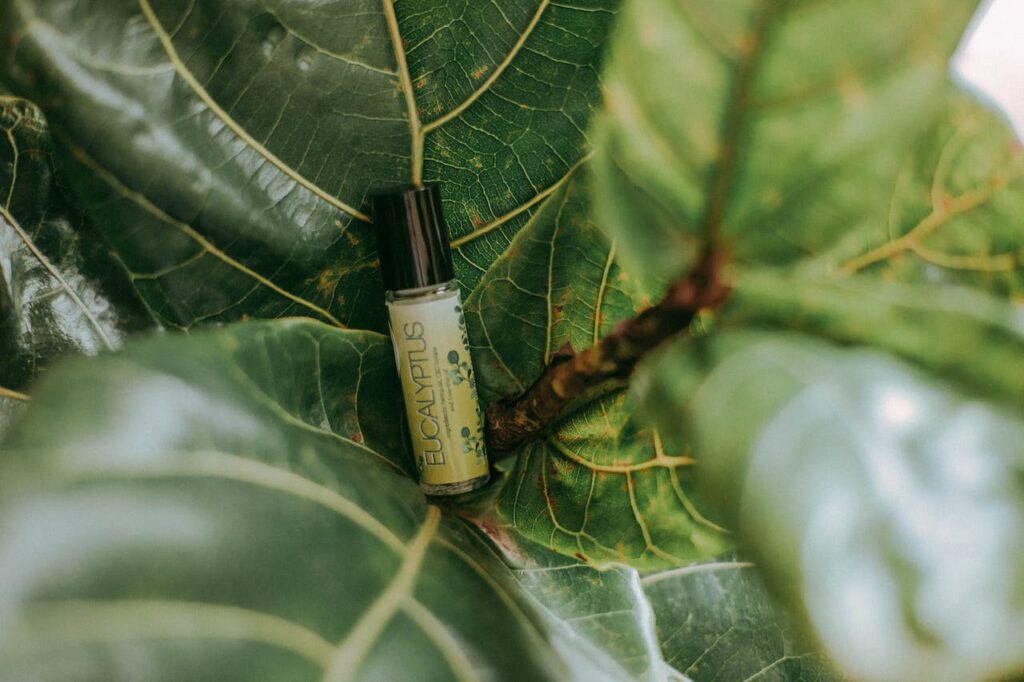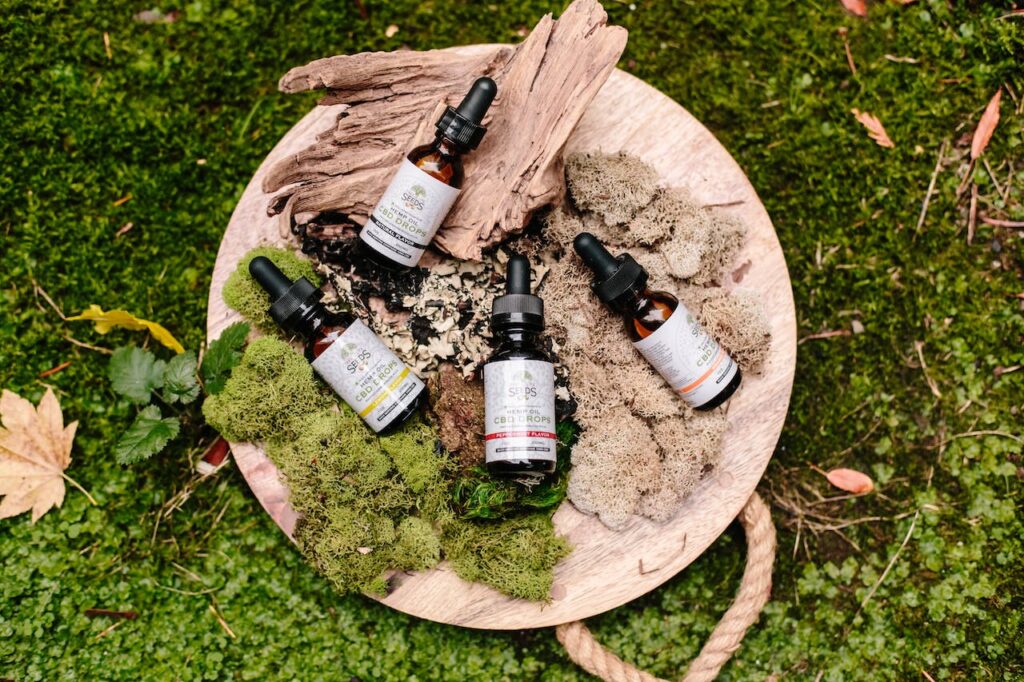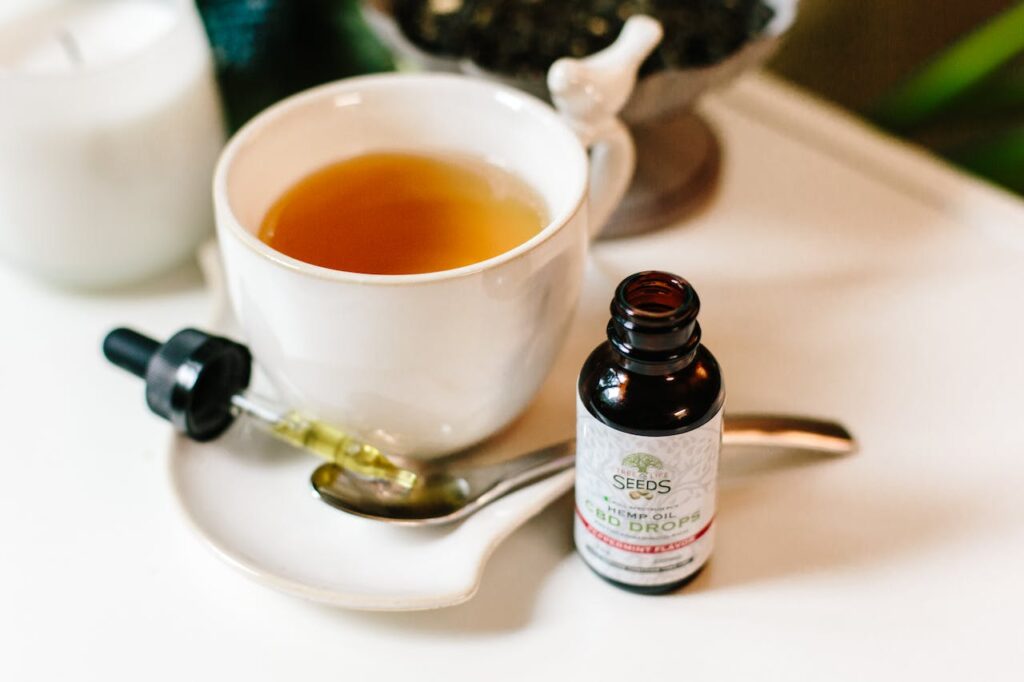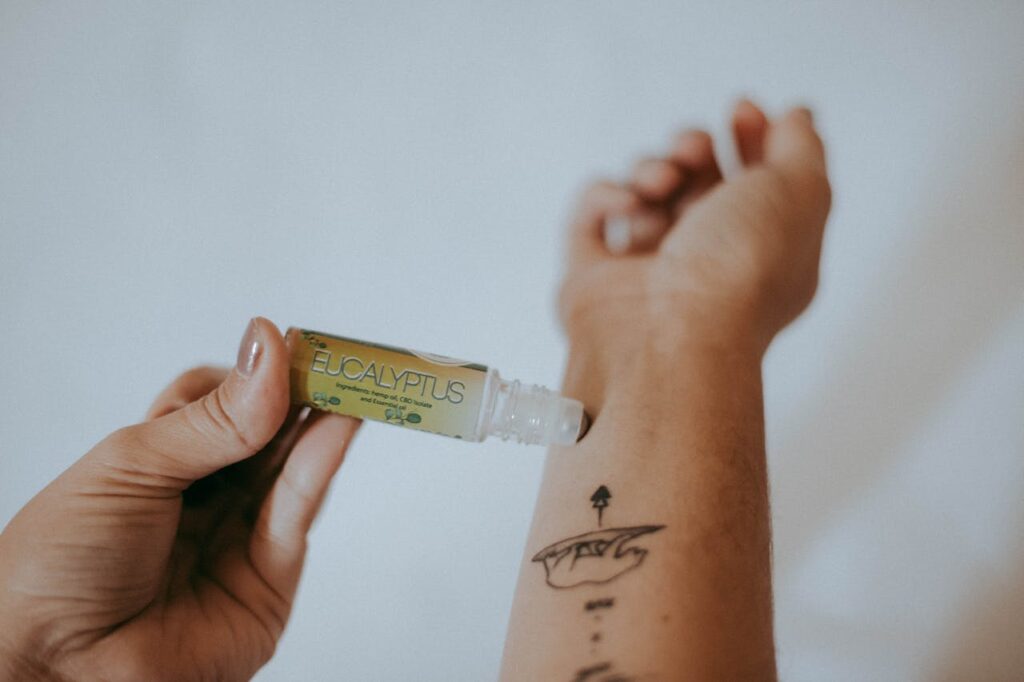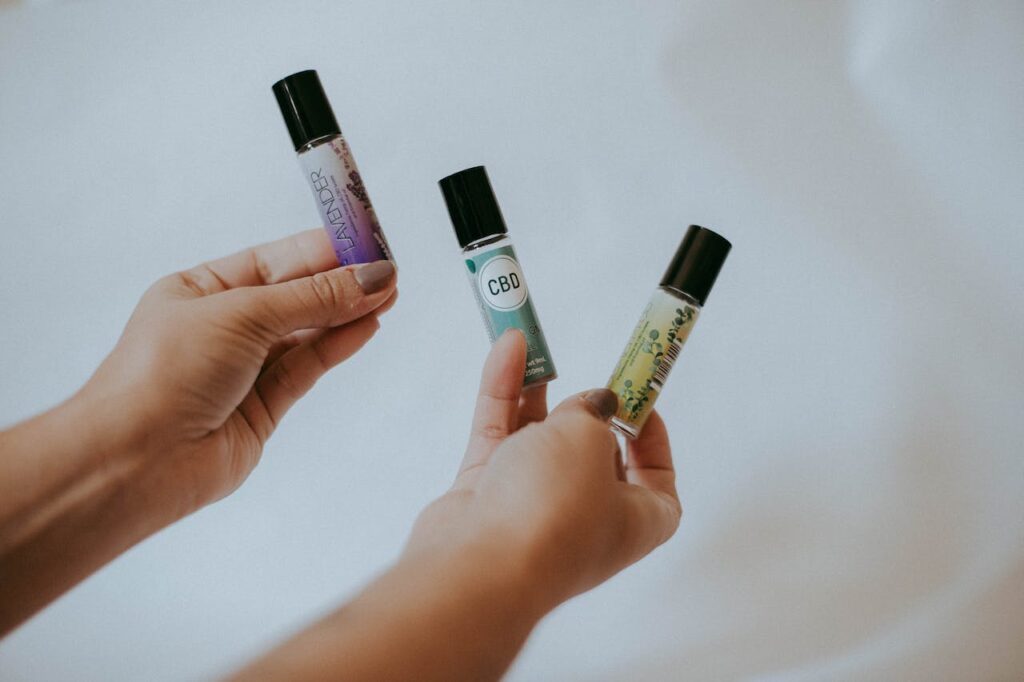
Blog
From Seed To Tincture: The Complete Production Journey Of Broad Spectrum CBD Oils
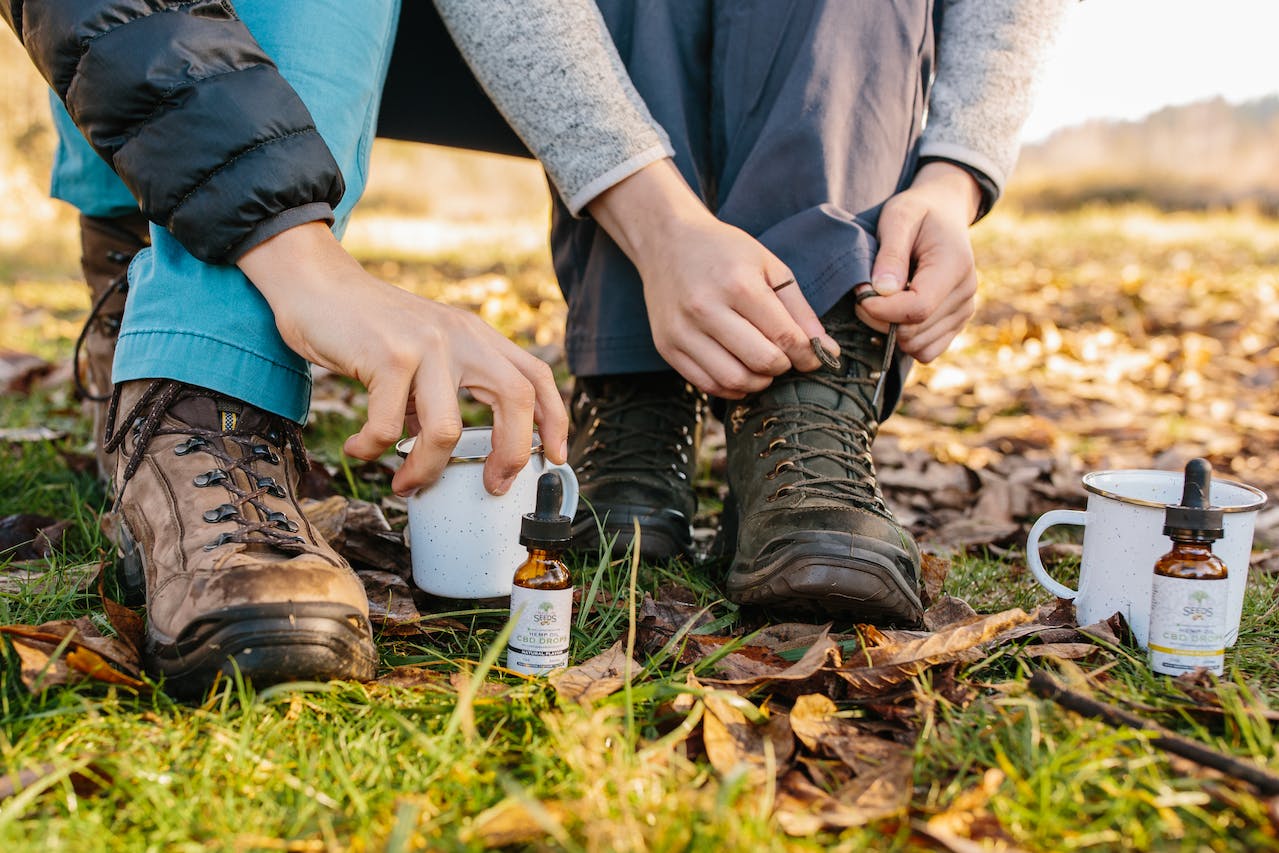
Understanding the production journey of broad-spectrum CBD oils is essential for anyone interested in harnessing the benefits of this popular wellness product. This comprehensive guide will take you through each stage of the process, providing valuable insights into how CBD oils are made.
Starting from seed, we’ll explore the meticulous cultivation and harvesting techniques employed to ensure high-quality hemp plants. We’ll then delve into the intricate extraction methods used to obtain a broad-spectrum CBD extract containing a wide range of beneficial cannabinoids and terpenes. Next, we’ll examine the crucial step of refining and purifying the extract to remove any unwanted impurities.
Moving forward, we’ll uncover how CBD oil is formulated and blended with carrier oils to create tinctures that are easy to consume and dose accurately. Finally, we’ll touch on quality control measures and third-party testing that ensure product safety and consistency.
Join us on this enlightening journey as we demystify the production process behind broad-spectrum CBD oils, empowering you with knowledge about where your favorite wellness products come from.
Understanding Full Spectrum, Broad Spectrum, And CBD Isolate
There are different types available on the market. It’s important to understand the differences between full spectrum, broad spectrum, and CBD isolate to make an informed choice about which one is right for you.
Differentiating Between Full Spectrum, Broad Spectrum, And CBD Isolate
- Full Spectrum CBD Oil: This type of CBD oil contains all the naturally occurring compounds found in the cannabis plant, including cannabinoids (such as CBD and THC), terpenes, flavonoids, and other beneficial plant compounds. It offers what is known as the “entourage effect,” where these compounds work together synergistically to enhance their therapeutic effects.
- Broad Spectrum CBD Oil: Similar to full spectrum CBD oil, broad spectrum also contains a wide range of cannabinoids and other beneficial compounds. However, it goes through an additional process to remove any detectable traces of THC. This makes it a suitable option for individuals who want to avoid THC but still reap the benefits of other cannabinoids.
- CBD Isolate: Unlike full-spectrum and broad-spectrum CBD oils that contain multiple compounds, CBD isolate is pure cannabidiol in its isolated form. During extraction, all other plant compounds are removed until only pure crystalline powder remains. This makes it completely THC-free and ideal for those who prefer a product without any trace amounts of THC or other cannabinoids.
Benefits And Drawbacks Of Each Type Of CBD Oil
Now let’s explore the benefits and drawbacks associated with each type:
Full Spectrum:
Pros:
- Offers enhanced therapeutic effects due to the entourage effect.
- Contains a variety of beneficial cannabinoids and plant compounds.
- May provide relief for a wide range of conditions.
Cons:
- May contain trace amounts of THC (less than 0.3%), which could potentially show up on a drug test.
- Some individuals may be sensitive to THC and prefer to avoid it.
Broad Spectrum:
Pros:
- Provides the entourage effect without any THC.
- Offers potential therapeutic benefits of multiple cannabinoids and plant compounds.
- Suitable for individuals who want to avoid THC but still experience the synergistic effects of other compounds.
Cons:
- The removal of THC may result in a slightly diminished entourage effect compared to full-spectrum CBD oil.
CBD Isolate:
Pros:
- Contains pure CBD without any traces of THC or other cannabinoids.
- Ideal for individuals who are concerned about consuming even trace amounts of THC.
- Can be easily incorporated into various products due to its versatility.
Cons:
- Lacks the potential synergistic effects that come with the presence of other cannabinoids and plant compounds.
How These Different Types Are Produced During The Extraction Process
The production process plays a crucial role in determining whether CBD oil is full spectrum, broad-spectrum, or CBD isolate:
- Full Spectrum CBD Oil: It is produced by extracting all the compounds from the cannabis plant using methods like CO2 extraction or solvent extraction. This preserves all the naturally occurring compounds, including cannabinoids, terpenes, and flavonoids.
- Broad Spectrum CBD Oil: After extracting all the compounds from the plant, an additional step called chromatography is performed to remove any detectable traces of THC while retaining other beneficial compounds.
- CBD Isolate: To produce CBD isolate, further processing is done after extracting all the plant compounds. This involves removing all other cannabinoids and terpenes until only pure crystalline powder remains.
Exploring The Production Process Of CBD Oil
The production journey of broad-spectrum CBD oils involves several key stages, each contributing to the creation of high-quality CBD products. Let’s delve into the step-by-step breakdown of how CBD oil is made, highlighting important stages such as cultivation, extraction, and refinement.
Cultivation: Growing Healthy Hemp Plants
To begin the production process, farmers carefully cultivate hemp plants that are rich in CBD. These plants are grown using organic farming practices to ensure they are free from harmful chemicals and pesticides. The goal is to create a healthy and sustainable environment for the hemp plants to thrive.
Extraction: Obtaining Cannabinoids From Hemp
Once the hemp plants have matured, it’s time for extraction. This crucial step involves separating cannabinoids like CBD from the plant material. There are different methods of extraction used in the industry, including CO2 extraction and solvent-based extraction. CO2 extraction is considered one of the most efficient and safe methods as it doesn’t leave behind any harmful residues.
Refinement: Purifying The Extracted Oil
After extraction, the obtained crude oil undergoes a refinement process to remove impurities and unwanted substances. This refining stage helps enhance both the quality and purity of the CBD oil. It often involves filtration techniques or further purification through processes like winterization or distillation.
Testing: Ensuring Safety And Quality
To ensure safety and quality, reputable CBD manufacturers conduct rigorous testing on their products. They send samples to third-party laboratories for analysis. These tests check for cannabinoid content, potential contaminants like heavy metals or pesticides, and overall product potency. Double lab testing is a common practice in which a second independent lab verifies results for added reliability.
Formulation: Creating Unique CBD Products
Once testing confirms that the extracted oil meets safety standards, it’s time for formulation. During this phase, manufacturers combine CBD with other ingredients to create various types of CBD products, such as tinctures, capsules, edibles, or topicals. They may also choose to add flavors or scents to enhance the overall CBD experience.
Packaging And Traceability: Ensuring Quality Control
Proper packaging is crucial to maintain the freshness and potency of CBD products. Manufacturers use high-quality materials that protect the product from light and air exposure. They often include batch numbers and expiration dates for traceability purposes. This allows consumers to verify the authenticity and quality of their CBD product.
Production Equipment And Techniques
CBD oil production relies on specialized equipment such as extraction machines, filtration systems, distillation equipment, and packaging machinery. These tools are designed to handle the specific requirements of extracting and refining CBD oil while maintaining safety standards.
From Seed To Harvest: Cultivating High-Quality Hemp Plants
To produce high-quality broad-spectrum CBD oils, it all starts with cultivating healthy hemp plants. The journey from seed to harvest is crucial in ensuring optimal results and cannabinoid content. Let’s explore the key factors and techniques involved in successful hemp cultivation.
Importance Of Starting With High-Quality Hemp Seeds
The first step in the cultivation process is selecting top-notch hemp seeds. Using high-quality seeds sets the foundation for a successful harvest. These seeds should come from organically grown hemp plants, ensuring they are free from harmful chemicals or genetic modifications that could compromise the quality of the final product.
Factors Contributing To Successful Hemp Cultivation
Several factors play a vital role in growing healthy hemp plants:
- Soil Conditions: Hemp plants thrive in well-draining soil rich in organic matter. The pH level of the soil should be between 6 and 7, providing an optimal environment for nutrient absorption.
- Climate: Hemp plants are adaptable but prefer temperate climates with moderate rainfall and plenty of sunshine. They require approximately 12 hours of sunlight per day during their vegetative stage for robust growth.
- Watering: Proper irrigation is essential for maintaining healthy hemp plants. Overwatering can lead to root rot, while under-watering can stunt growth and reduce yield. Striking the right balance is crucial.
- Pests And Diseases: Like any other plant, hemp is susceptible to pests and diseases that can damage or destroy crops. Implementing pest control measures, such as using natural repellents or biological controls, helps protect the plants without compromising their organic status.
Techniques For Maximizing Cannabinoid Content
To ensure high cannabinoid content in hemp plants, farmers employ various techniques throughout their growth cycle:
- Pruning: Pruning involves selectively removing branches or leaves to enhance airflow and light penetration within the plant canopy. This technique helps prevent mold or mildew growth and promotes the development of robust buds.
- Topping: Topping refers to the removal of the top portion of the main stem, encouraging lateral growth and increasing bud production. By topping hemp plants, farmers can achieve higher yields while maintaining overall plant health.
- Harvest Timing: Harvesting at the right time is crucial for preserving cannabinoid content. Waiting too long may result in a decrease in CBD levels as THC levels rise. Monitoring trichome development and using reliable testing methods help determine the optimal harvest window.
- Drying And Curing: After harvest, proper drying and curing techniques are essential to maintain the quality of hemp flowers. Slow drying in a controlled environment prevents mold or mildew formation while preserving cannabinoids and terpenes.
By implementing these cultivation techniques, farmers can produce high-quality hemp plants with optimal cannabinoid content for broad-spectrum CBD oils.
Extraction Methods: Obtaining Cannabinoids From Hemp
To create broad-spectrum CBD oils, the cannabinoids must first be extracted from the hemp plants. There are different methods used to extract these valuable compounds, each with its pros and cons. Let’s explore some of the popular extraction techniques and their implications.
CO2 Extraction: A Cleaner Approach
One widely used method is CO2 extraction, which involves using pressurized carbon dioxide to separate the cannabinoids from the hemp plant. This process is considered one of the cleanest and most efficient methods available.
Pros:
- Produces high-quality hemp extract without any residual solvents or unnatural substances.
- Retains a wide range of cannabinoids, terpenes, and other beneficial compounds found in the whole hemp plant.
- Offers precise control over temperature and pressure, allowing for customization of the extraction process.
Cons:
- Requires expensive equipment for proper implementation.
- Can be time-consuming due to the multiple steps involved in supercritical extraction processes.
- The complexity of CO2 extraction can make it challenging for small-scale producers.
Solvent-Based Methods: A Traditional Approach
Solvent-based methods involve using a liquid solvent such as ethanol or hydrocarbon (e.g., butane) to dissolve and extract cannabinoids from the hemp plant material. This approach has been used for many years in traditional cannabis extractions.
Pros:
- Relatively cost-effective compared to CO2 extraction equipment.
- Can yield high concentrations of cannabinoids in a shorter period.
- Suitable for both large-scale production facilities and smaller operations.
Cons:
- May leave behind traces of solvents if not properly purged during post-extraction processing.
- Some solvents may alter or degrade certain compounds present in the hemp plant, affecting overall product quality.
- Requires careful handling due to flammability risks associated with certain solvents.
It is important to note that regardless of the extraction method used, the resulting hemp extract must undergo further processing to remove impurities and unwanted compounds. This ensures a clean and pure CBD oil that is safe for consumption.
Refining And Purifying CBD Extracts
To ensure the highest quality and potency of CBD oils, the extracted cannabinoids go through a refining process to remove any impurities. This step is crucial in producing premium CBD products that offer pure CBD concentration. Techniques such as winterization, filtration, or distillation are commonly used to purify the extracts.
Removing Impurities: Winterization, Filtration, And Distillation
Winterization is a refining technique that involves cooling the extracted oil to very low temperatures. By doing so, unwanted fats and waxes solidify and can be easily separated from the desired cannabinoids. This process helps enhance the purity of the extract.
Filtration is another method used to remove impurities from CBD extracts. It involves passing the extract through various filters that trap unwanted particles and substances. This helps eliminate any remaining plant material or contaminants, resulting in a cleaner and more refined product.
Distillation is a popular purification technique used in CBD production. It involves heating the extract to separate different compounds based on their boiling points. Through this process, impurities are removed, leaving behind highly concentrated cannabinoids with enhanced potency.
Enhancing Potency And Purity
Refining extracts play a significant role in enhancing both the potency and purity of CBD oils. By removing impurities, manufacturers can create products with higher concentrations of CBD, ensuring users receive optimal benefits from each dose.
The removal of unwanted substances also contributes to the overall quality of CBD tinctures. Pure extracts provide a more consistent experience for consumers as they can rely on the product’s quality without worrying about potential contaminants or inconsistencies in potency.
Premium Quality CBD Products
The refinement process is particularly important. These products often undergo additional steps to isolate specific cannabinoids or create unique blends for targeted effects.
CBD isolates are an example of highly refined products that contain only pure cannabidiol. These isolates are free from any other compounds found in the hemp plant, making them ideal for those who prefer CBD without any additional elements.
Tinctures, on the other hand, are CBD extracts that have been mixed with a carrier oil to create a convenient and easy-to-use product. The refining process ensures that tinctures maintain their purity while offering a refreshing taste and an alternative way of consuming CBD.
Relief Premium CBD Tincture: A Pure And Potent Option
One example of a premium CBD tincture is the Relyf Premium CBD Tincture. It undergoes rigorous refining and purification processes to ensure the highest quality. Available in different bottle sizes, this tincture offers users a choice in potency and dosage.
With its focus on purity and potency, Relyf Premium CBD Tincture provides users with a reliable option for incorporating CBD into their wellness routine. Its high-quality extraction methods and refining techniques make it a trusted choice among consumers seeking premium CBD products.
Creating Broad Spectrum CBD Oil: Removing THC While Preserving Beneficial Compounds
To produce broad-spectrum CBD oil, the first step is to eliminate THC from the extract. THC, or tetrahydrocannabinol, is the psychoactive compound found in cannabis that produces a “high” sensation. By removing THC, broad-spectrum CBD oil ensures a THC-free product without compromising on potential health benefits.
During the production process, manufacturers carefully process the hemp extract to separate and remove THC while retaining other beneficial compounds like terpenes. Terpenes are aromatic compounds found in plants that contribute to their unique flavors and scents. They also have potential therapeutic benefits when combined with CBD, creating what is known as the entourage effect.
The removal of THC involves several steps to ensure a pure and high-quality broad-spectrum CBD oil:
Step 1: Extraction
The process begins with extracting CBD from the hemp plant using various methods such as CO2 extraction or solvent extraction. This results in a concentrated form of CBD extract that contains other cannabinoids, terpenes, and trace amounts of THC.
Step 2: Refining
Next, the extracted oil undergoes refining processes such as winterization and filtration to remove impurities and unwanted components like waxes and lipids. This helps improve the overall purity of the extract.
Step 3: Distillation
Distillation is then used to further purify the CBD extract. This involves heating and cooling the extract at specific temperatures to separate different compounds based on their boiling points. Through this process, manufacturers can isolate specific cannabinoids like CBD while removing any remaining traces of THC.
Step 4: Broad Spectrum Formulation
Once THC has been removed through distillation, manufacturers carefully reintroduce other beneficial compounds like terpenes back into the CBD oil. This ensures that the final product retains many terpenes found naturally in hemp plants while remaining free of any detectable THC.
By following these steps, manufacturers can create a superior broad-spectrum CBD oil that offers the potential therapeutic benefits of the entourage effect without the presence of THC. Broad-spectrum CBD oils are often preferred by individuals who want to experience the synergistic effects of multiple cannabinoids and terpenes without consuming THC.
Broad-spectrum CBD oil also offers other advantages, such as:
- High Bioavailability: Broad-spectrum CBD oil is easily absorbed by the body, allowing for faster and more efficient delivery of its beneficial compounds.
- Versatility: It can be used in various forms, including tinctures, capsules, topicals, and edibles.
- Consistency: With careful processing and formulation, broad-spectrum CBD oil ensures consistent levels of cannabinoids and terpenes in each batch.
- THC-Free: Broad-spectrum CBD oil provides a solution for those who may be concerned about consuming even trace amounts of THC due to personal or legal reasons.
The Complete Production Journey Of CBD Oils
We started by understanding the differences between full spectrum, broad spectrum, and CBD isolate. Then, we delved into the various stages of the production process, starting from cultivating high-quality hemp plants to extracting cannabinoids from them.
Throughout this journey, we learned about different extraction methods and the importance of refining and purifying CBD extracts. Finally, we discovered how broad-spectrum CBD oil is created by removing THC while preserving other beneficial compounds.
Now that you have a comprehensive understanding of the production journey of broad-spectrum CBD oils, you are equipped with valuable knowledge to make informed decisions. Whether you are a consumer seeking natural remedies or a business looking to offer high-quality CBD products, it is important to consider every step of the production process.
Sources:
- /blog/cannabidiol-cbd-what-we-know-and-what-we-don’t-2018082414476
- /vitamins/ai/ingredient mono-1439/cannabidiol-cbd
- /a-to-z-guides/news/20190624/cbd-as-a-superbug-antibiotic
Find Your Bliss With Mary Jane’s Premium Broad Spectrum CBD Oil Tinctures
Feeling overwhelmed by the relentless pace of life, the echo of everyday stress, or the persistent nagging of minor aches and pains? Discover a natural ally in Mary Jane’s CBD Dispensary, where we elevate your pursuit of wellness with the finest Broad Spectrum CBD Oil Tinctures available. At Mary Jane’s, we believe that nature holds the key to a serene and joyful existence. Crafted from organically grown hemp and infused with nature’s remedies, our Broad Spectrum CBD Oil Tinctures are your ticket to a life embraced by tranquility and comfort.
Why settle for anything less than the best when it comes to your well-being? Cast aside your worries about quality and efficacy; every drop of our Broad Spectrum CBD Oil Tinctures is a promise of purity and potency, designed to deliver a soothing touch to both mind and body. Indulge in the subtle, delightful flavors that transform your wellness routine into a moment of bliss. Mary Jane’s commitment to excellence ensures that you’re not just purchasing a product but embracing a lifestyle of clarity and happiness.
Take control of your health and happiness today. With Mary Jane’s CBD Dispensary, access to premium Broad Spectrum CBD Oil Tinctures is just a click away, delivered directly to your doorstep. Or, visit us at our locations for a personalized experience that will exceed your expectations. Don’t just chase life – thrive in it with the support of Mary Jane. Shop with us online and feel the exceptional difference as you embark on a journey to a more balanced and fulfilling life.
Disclaimer
The materials available on this website are for informational and entertainment purposes only and not to provide medical or legal advice. You should contact your attorney and/or doctor to obtain advice concerning any particular issue or problem. You should not act or refrain from acting based on any content included in this site without seeking legal or other professional medical advice. The information presented on this website may not reflect the most current legal or medical developments. No action should be taken in reliance on the information contained on this website and we disclaim all liability concerning actions taken or not taken based on any or all of the contents of this site to the fullest extent permitted by law.

